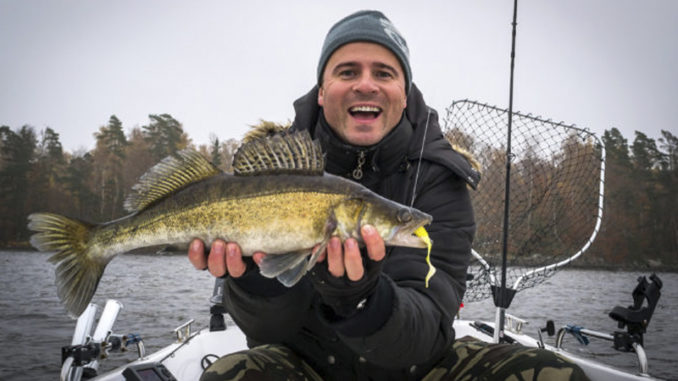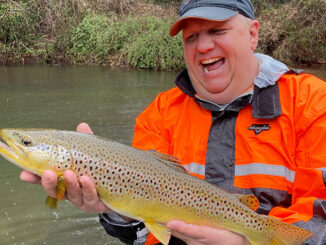
Expert walleye guide shares his tips
With bait-bucket stocking of alewives, white perch and spotted bass in many reservoirs in western North Carolina, fishing for walleye, long a local favorite, has taken a nosedive. Walleye eat alewives, which carry an enzyme that keeps walleye from being able to form eggs. And those fish that do drop a cluster of eggs get to watch the white perch eat them. And if the eggs ever hatch, the aggressive spots are there to eat the fingerlings.
One mountain reservoir that is a little bit behind the curve and still has a decent population of walleye is Fontana Lake, a 10,230-acre reservoir west of Bryson City that impounds three rivers: the Tuckasegee, Little Tennessee and Nantahala. Walleye will begin moving up the three rivers to spawn in March, but guide James McManus of 153 Charters doesn’t wait for that move. He works on them this month before they get the urge to head upstream.
“It depends on the weather. Once in a while, if we have a real warm February, they’ll start to run up the rivers. But most of them time, they’ll still be pretty deep, and we’ll catch them trolling,” said McManus (828-421-8125). “They’re all up in the upper fourth of the lake, waiting to go up.”
Try deep-trolling with Alabama rigs
McManus said the Tuckasegee has had better numbers of fish in recent years, so he sets up just outside the junction of the river and the lake proper and trolls mostly Alabama rigs for the big-eyed member of the perch family in 50 to 60 feet of water on downriggers.
“Some years, more fish are in the Tuckasegee,” McManus said. “It’s always encouraging to see a lot of smaller fish. In the past few years, I’ve caught quite a few 8- to 10-inch fish — the first ones that size we’ve seen in a while. So they must have had a pretty good spawn in recent years.”
McManus starts each trip paying close attention to his depth finder, looking for signs of bait — and white bass are often corralling them just below the surface — because walleye will usually be in the same area.
“You find white bass, and walleye are going to be there, just deeper,” said McManus. He trolls an Alabama rig with a number of whirling blades but wires for three lures. He’ll fish swimbaits and twister-tail grubs on the tiny jigheads. And he’ll often fish a Rapala plug on the trailing wire.
As February progesses, he’ll move into the mouth of the Tuckasegee and move closer to the bank. As walleye really tune up for their spawning run, they’ll move into 10 or 15 feet of water and start creeping toward the river current; when the spawn gets cranking, they’ll head upstream as far a conditions will allow. They’re usually stopped by some kind of area of shoals.




